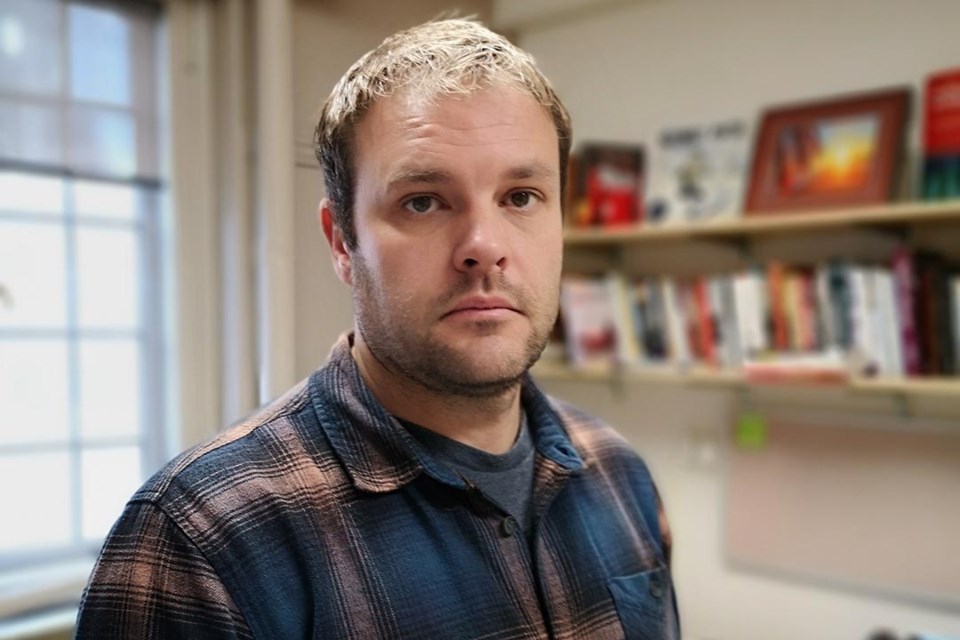THE BATTLEFORDS - Can reconciliation end Indigenous street gangs?
Robert Henry, a professor from the University of Saskatchewan who specializes in Indigenous gangs in Saskatchewan, feels that reconciliation is a problematic term. Firstly, because there is a lack of true action 小蓝视频 done to end systems of ongoing colonialism — also noted in BRCC’s recent anti-racism training — but also due to the lack of positive reconciliation cropping up across Canada and the province.
He feels that reconciliation focuses too much on what Indigenous people need to do and solve and not enough on what settlers need to do — meaning that reconciliation, an often-empty word — is not living up to the promise of bridging settler and Indigenous communities together.
“But here’s the thing, when we look at colonialism, you’re using it as a past tense. Colonialism is ongoing, it’s still happening today,” he told the News-Optimist.
“And we can see that in the way in which Indigenous peoples are [over]-represented across justice spaces. Over-incarceration, what I would call hyper-incarceration of Indigenous bodies, there are higher rates of trauma-related issues and addiction issues.
“You have high rates of violence onto indigenous bodies,” he said, adding “It’s higher than anyone else.”
Henry explained that the driving force behind colonization was and is violence and that gang involvement among Indigenous people is just another example from the effects of colonialism.
“If two boys are fighting on a playground in one area of North Battleford in a higher socio-economic hierarchy, primarily white coded ... that’s boys 小蓝视频 boys. But if that’s two Indigenous kids in lower socio-economic areas, that is going to be perceived very differently,” he said, noting that prejudice also affects what is considered gang violence in communities.
An issue he noted, is also the difference in how gang violence is measured, adding that groups across Saskatchewan use different metrics to determine what violence involves gangs.
And despite gang violence 小蓝视频 a near-constant topic of conversation in the Battlefords while they grapple with discussions surrounding crime, how can it be solved? The problem with that question, Henry says, stems from a misunderstanding of how gangs work. He said there is an idea that Indigenous street gangs are driven predominantly by Indigenous people seeking community, an idea that is not true.
“The idea that indigenous youth are joining gangs as a sense of belonging, [is] not really the case … [the] reality is that most of the gang members are joining gangs that their families already belong to,” he said.
“The first three reasons [Indigenous people join street gangs] are money, power, and respect. So, if you’re going to be looking at … how to deal with Indigenous street gangs, how do we make sure that indigenous people youth primarily feel that they have power?”
At the end of the day, Henry said that solving those systemic traumas and overbearing colonialism that still linger are key end the struggles affecting Indigenous people in Canada, Saskatchewan and North Battleford.
“Until we ... do these large-scale interventions we’re never going to tackle the issue because it’s going to be piecing [things] together.”
Candid interview with gang member
Rodney Nataucappo, a former Indigenous gang member himself, told the News-Optimist in a 2023 interview that Indigenous gang violence almost always stems from addictions.
“The biggest reason [people join gangs] that I see in First Nations communities and places that are connected to First Nations … gang members get something out of the gang membership that they never got at home,” Nataucappo said.
This is a theme going back to the 1960s and 70s when, Nataucappo noted, alcohol consumption began to increase on his reserve in Saskatchewan. It was used to cope with weak family structures and mental health struggles, he said. Now, families are three or four generations deep into gang involvement.
“But if you think about ... the communities around North Battleford ... it gives you an idea of how far that’s been going and where it kind of started. So, the addiction and abuse and trauma, and then how many generations that trickled down to now.”
Nataucappo mentioned that people in Indigenous communities dealing with social issues like drug addiction, mental health struggles, and rashes of youth suicide are affected in untold ways because they see no better future — making it less about crime and more about healing First Nation people to move forward together.
“And if you think about all the social issues that affect communities, that creates a perfect breeding ground for violence and for gang membership and for all that stuff,” he said, explaining this example is one possible scenario of many.
Stan Tu’inukuafe of STR8-UP in Saskatoon — a group which helps former members leave gang life behind — interviewed over the phone along with Nataucappo, said that although reconciliation is good for getting people to work together, he wonders if there are enough resources to provide support for people struggling with addictions.
“I would hope that people will want to address the issues outside of reconciliation, but maybe, you know, sometimes we get into these buzzwords, like, during those time periods of reconciliation, I would hope that that is enough.
“I think it needs more than just bringing people together,” he said.



